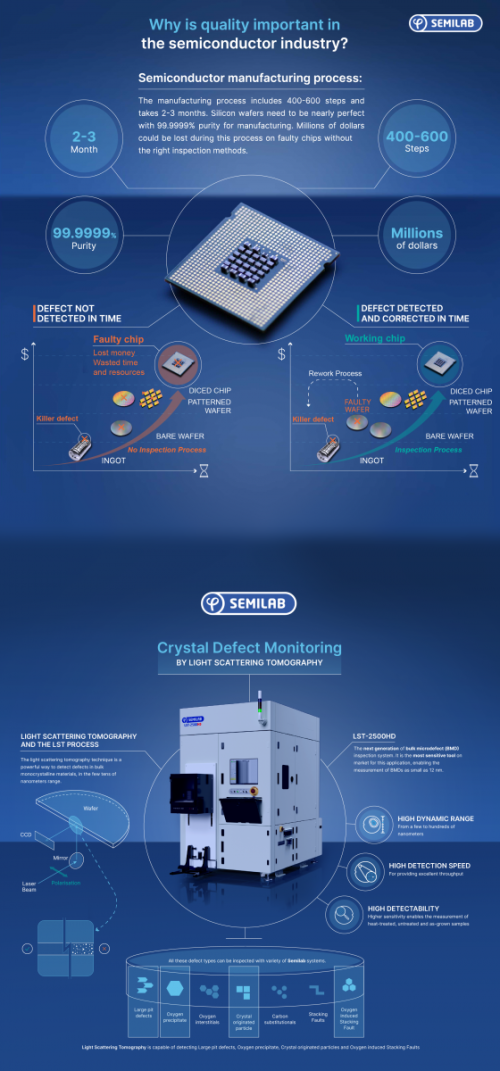About the Importance of Quality Control in the Semiconductor Industry and the Possibilities of the Light Scattering Tomography Technique
10.26.2022

.png) For silicon wafers to function properly, they need to be nearly perfect. Even after making it through the entire wafer manufacturing process, which contains about 400-600 steps, takes 2-3 months, and costs millions of dollars, the wafer can still be less functional as a semiconductor device without adequate quality control and inspection.
For silicon wafers to function properly, they need to be nearly perfect. Even after making it through the entire wafer manufacturing process, which contains about 400-600 steps, takes 2-3 months, and costs millions of dollars, the wafer can still be less functional as a semiconductor device without adequate quality control and inspection.
To learn more about the manufacturing process and the high expectations regarding quality, let’s take a closer look at the typical flaws in the silicon wafer, this time focusing on spotting Bulk Micro Defects.
What do you need to know about them?
“Bulk Micro Defects” (BMD) is a term commonly used to refer to oxygen precipitates in silicon. In fact, many imperfections in the silicon lattice create defects, and BMDs could be any imperfections, including oxygen precipitates, voids, inclusions, or slip lines among others. Dislocations can be formed during crystal growth but also at thermal processing of wafers, during CMOS device manufacturing, like epitaxial layer growth and implant anneal steps.
With our “Defect Universe” graph, we help visualize these tiny but serious flaws, capable of ruining an entire chip and wasting precious time and resources if not detected in time.
The light scattering tomography technique is a powerful way to detect defects in bulk monocrystalline materials, in the few tens of nanometers range. The focused infrared laser beam illuminates the scatterers, like precipitates, dislocations, and stacking faults in bulk, close to the cleaved surface of the semiconductor wafer. The perpendicular scattered light is collected with a high NA objective, and the image is detected with a near-infrared sensitive CCD camera.
The LST-2500HD system - with triple HD features - is our take on utilizing the light scattering tomography for bulk defect detection. The combined High Dynamic Range, High Detection Speed, and High Detectability features make it the most sensitive tool available today for detecting BMDs as small as 12 nm.
Our low-angle light scattering tomography solution enables manufacturers to sort out any defective material, saving precious time and resources while ensuring that only perfect chips hit the market and no wasted product is produced.





